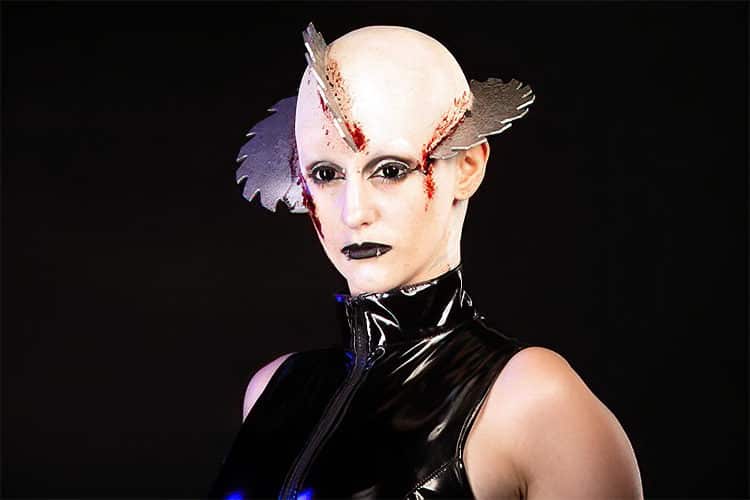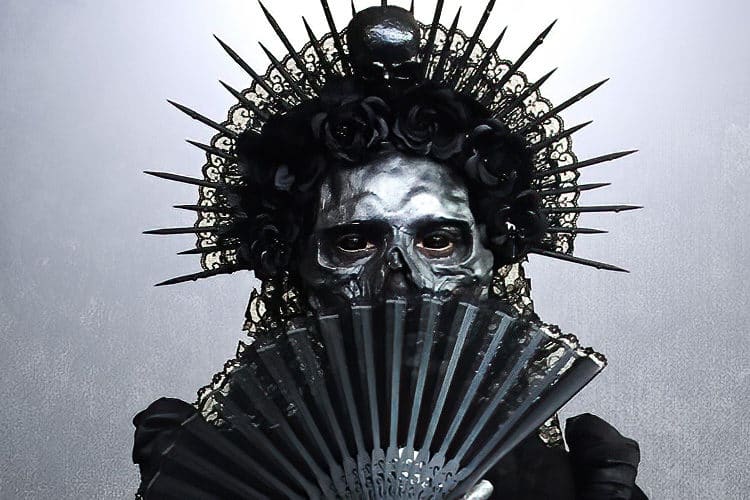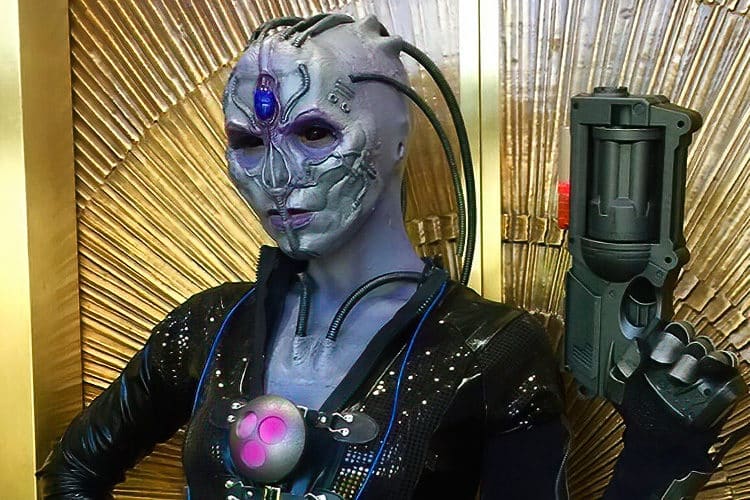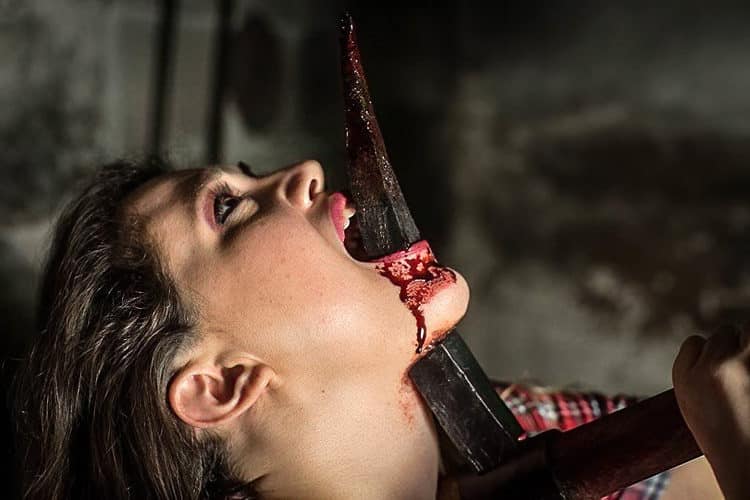It is more important than ever to keep your attraction makeup space clean and provide safe and hygienic makeup application. In his seminar created for HAuNTcon’s virtual 2021 event, Shawn Morse discusses ways to transform your haunt makeup room into a safer space, how to ensure your haunt makeup artists provide hygienic application, and tips on cleaning, disinfection and sanitization.
Shawn Morse is a special effects makeup artist in the Seattle area and the makeup director at Stalker Farms Haunted Attractions just North of Seattle in Snohomish, Washington. He has been in the haunted attractions industry for the past 11 years. In 2020, Shawn coauthored Guidelines for Makeup Hygiene and Safety at Attractions together with Jeff West of West Effect. His portfolio can be found at ShawnMorseFX.com.
Listen Now:
Watch Now:
Why Create Guidelines for Cleaning and Health Safety At Your Attraction?
There are a couple of important reasons to create guidelines. The first, of course, is to help protect your haunt staff’s health by reducing germs, bacteria, and viruses in the makeup room. We have seen just how important that is from the past year. The second reason is to save money by reducing the risk of contaminating and damaging your makeup supplies.
Look into compiling a set of guidelines for work procedures in the makeup room. This should cover everything from use of personal protective equipment, to how to clean and disinfect makeup tools, makeup, brushes, and products, as well as how to handle any issues that arise.
You are recommended to implement a cleanliness and health safety training for all of your staff at least once a year. Even though this is basic information, it is important to review this year after year. In addition, it is recommended to assign a person as a COVID-19 safety officer to help establish safe work procedures and enforce those for both the makeup artists and anyone who is in the haunt makeup space, getting makeup on them. This person can come in the form of a chief of staff, or a makeup director, for example, and it doesn’t necessarily have to be one specific individual if your staffing needs don’t have that.

General Safety Procedures to Protect Staff
First and foremost, any staff who has been sick with a contagious illness, or who may have a family member with a contagious illness, should be encouraged to stay home and not be at the attraction. That little ounce of prevention can save you a huge headache down the line.
All makeup artists, and anyone working in the makeup space, must wash their hands with soap and water for 20 seconds prior to work, or use hand sanitizer with at least a 60% alcohol content.
This has been a hot topic over the past year at attractions, but consider shifting all of your makeup over to airbrush makeup, to eliminate any contact with the actors.
Think about separating the makeup team into work teams to reduce cross team contamination. What that means is, for example, having a makeup team A and makeup team B, so if makeup team A should come down with something then makeup team B can swoop in and handle their load. Also consider physically distancing departments – having the makeup department separated from the costume department, for example, to limit any sort of interaction between the staff. Finally, think about implementing a contact tracing program to pinpoint any exposed staff, if someone should come down with something – ex. tracking which makeup artists worked on which actor on which day.
When planning your haunt makeup space consider capacity and creating distance between makeup stations in the makeup room. This can help not only with preventing the spread of colds and illnesses, but can also make flow through the makeup space a lot more efficient. When we’re talking about COVID-19, we’re talking about setting up the makeup stations, six feet (two meters) apart, and using non-porous barriers, such as plastic sheets or plexiglass. Whether it’s COVID-19 or not, it’s important to keep non-essential people out of the makeup room, just to increase that flow and make it much more efficient. Additionally, have people wait outside the makeup room, not inside.

Keeping the Makeup Room Clean
Absolutely no food. If you want to eat, do it outside the makeup space. You can bring a drink in, but it has to have a fastened lid instead of an exposed lid or exposed drinking area. Don’t touch your phone or other personal items – this might be very difficult. If you do need to access a phone, you can put it into a plastic bag and sanitize the outside of that bag.
When it comes to makeup, sharing is not caring. Each and every makeup station should have their own set of makeup products, tools, brushes, and airbrush. At the start and the end of every day, you want to disinfect tables, chairs, and any high touch surfaces. Inspect all of your makeup tools and brushes for anything that looks out of the ordinary or wonky, and then store your makeup tools and brushes in a clean, closed container at the end of the night. During the day you want to clean and disinfect your makeup chair, station tools, and brushes in between each and every actor. Your makeup artists should wash and sanitize their hands before each and every application, and then wear personal protective equipment.
Last but not least, especially if you’re doing any sort of airbrush makeup, ventilation is very important. Instead of having a fan inside that just circulates the air around, it’s important to have an exhaust system that exhausts out that air.
Do’s and Don’ts in the Makeup Room
You do want to use a makeup spatula and stainless steel palette to depot makeup. Instead of applying the makeup directly from the original makeup container, you should use any stainless steel spatula to pull out that makeup from the container and apply it onto a pallet, and then apply from that pallet to the actor. That prevents cross-contamination. The products that you can do that with include makeup creams, adhesives powders, lipsticks, tooth effects, and blood. The exceptions to this are alcohol activated palettes and eye shadow palettes. They can be used as is, but they should be disinfected.
You do want to use single use applicators such as cotton swab, sponges, applicators, DRAM cups, and while this does create garbage over the long-term, it does help prevent cross-contamination. You do want to store your dirty brushes and tools in a closed container, so they don’t contaminate your clean stuff.
You don’t want to be double-dipping. You don’t want to use your fingers to apply makeup. Don’t use anything that’s fallen onto the floor directly onto your actor. If it’s a single use applicator – throw it away. If it’s a makeup brush you have to clean and sterilize it all over again.
Do regularly consult your actors for any allergies that they might have developed over the years, such as latex, especially if you’re using any sort of prosthetics, latex, or foam latex. Instead of using latex gloves, use nitrile gloves. Finally, don’t use alcohol-based products near the eyes, nose, or mouth as these can really irritate the mucous membrane.

Personal Protective Equipment (PPE)
Your guidelines should talk about personal protective equipment, and the options that are available for the makeup artists to help prevent transmission of illness and ensure hygiene. These can include masks, face shields, goggles, aprons, and non-latex gloves. The attraction should provide PPE where possible for the makeup staff, with the exception of goggles or face shields that have a prescription on them. In the guidelines, develop a step by step process for putting on and removing the PPE for your staff to follow. If you decide not to use gloves, be sure to have the staff wash hands or use hand sanitizer before, during, and after working on someone’s makeup or hair. Be sure to follow the recommendations by local state and other governmental authorities on PPE.
Cleaning, Sanitation, and Disinfection
There is a lot of confusion when it comes to the terms “Cleaning”, “Sanitation”, and Disinfection”. Cleaning is just cleaning with soap and water, sanitization is a step above that, and disinfection is a step above sanitization.
Sanitation means reducing the microbial population of bacteria by 99.9%. It works faster than disinfectants with a shorter contact time. These usually come in the form of hand sanitizers and sanitizing sprays.
Disinfection is killing the microorganisms, such as bacteria, viruses, mold, mildew, and fungi on non-porous items and surfaces. It requires a longer contact time and it does a much more thorough job. These are disinfecting wipes, sprays, Barbicide, and isopropyl alcohol between 70% and 91%. Just a side note, 99%. isopropyl alcohol, does not contain sufficient water content to be used as an effective disinfectant. So, that is why we have to use between 70% and 91%, that’s our golden range right there.
When we talk about contact time, this refers to the amount of time required for the products to remain wet and actively kill the organisms. So it’s not just the spraying on and wiping, you have to spray it on and allow it to work its magic for whatever contact time that is. For isopropyl alcohol, 70%, it’s a minimum of one minute to disinfect. When you spray it on, you have to let it sit for one minute. The Barbicide spray has a 10-minute contact time. So you would spray it on a surface, then let it work for 10 minutes. Just read the label. Know the recommended contact time for the products that you’re using.

Cleaning, Sanitization, and Disinfecting Products
Cinema Secrets has a really cool brush cleaner and brush soap that they provide for makeup artists. The brush soap in particular has this nice round soap that you get wet with your brush, and then there’s a little nubby insert that you rub the brush over while lathering the soap onto the brush. It really does a good job getting all the soap up into the bristles. Bdellium Tools also has a similar brush cleaner. Musst Brush Cleaner is great as well; it uses eucalyptus oil to break up any sort of material that’s on that brush.
Cinema Secrets also makes a wonderful makeup sanitizing spray that you can spray on your brushes.
In terms of disinfectants, there is 70% to 91% isopropyl alcohol, which is also known as isopropynol, or ethanol (but we don’t want to be using methanol). Barbicide is an industry standard for the hair and makeup. It uses a concentration that you dilute and then convert into a spray. You can spray it on to anything from hair tools, to makeup brushes, to your makeup chair, to your makeup station. Disinfectants also include Clorox, Lysol, disinfecting sprays, and wipes. Just be sure to use products that are gentle and effective, that won’t damage your makeup tools.
Process to Clean & Disinfect Between Each Actor
Makeup, hair tools, and brushes should be cleaned and disinfected in between each and every actor. Begin by wiping away any remaining product onto a paper towel. Then thoroughly saturate that tool and brush with a brush cleaner or 99% alcohol. Again, just as a note, 99% isopropyl alcohol is not an effective disinfect and we’re only using that to remove the product – it’s not going to disinfect our tools. For any hair tools, such as combs and brushes, you can use the Ship-Shape cleaner. Either soak the tools in the Ship-Shape cleaner or get them nice and saturated with the cleaner. Step three, rinse and wipe off that cleaner and repeat, one for three as necessary until you get all the products off.
Next we move on to the sanitization/disinfecting step, by spraying and wiping with either a sanitizing spray, 70% isopropyl alcohol, or Barbicide. The last step is to allow the tools and makeup brushes to air-dry for the suggested contact time. Once they’re dry, they can then be placed back into a clean container and used for the next actor.
You can flush any area equipment with a cleaner or 99% alcohol. Wipe down the outside with a cleaner and then spray it with 70% isopropyl alcohol. Yes, the airbrush equipment and airbrush gun does not come in contact with the actor per se, but it’s still within their breathing space. Also, your hands are touching that as well. So it’s always a good idea to just spritz the outside with 70% just to kill anything that might be on the outside. If you’re using any sort of airbrush stencils, be sure to clean the stencils and then disinfect them with 70% isopropyl alcohol as well.

Keeping Makeup Products Germ-Free
Makeup containers with makeup that can be depotted don’t normally have to be cleaned and disinfected on the inside. Those containers can usually just be wiped on the outside and spritzed with a 70% isopropyl alcohol, or even Barbicide. The alcohol activated pallets and eye shadow pallets that we applied directly from should be sprayed with 70% alcohol and allowed to dry. If you’re using makeup pencils, sharpen those, spritz the outside with 70% alcohol, and allow those to dry. Then at the end of the night, wipe down your haunt makeup kit and airbrush equipment, spray it with a 70% alcohol or Barbicide, and it will be ready to go the next day.
Avoid Non-Skin Safe Products
First off, always use skin safe makeup products and makeup blood on the face and body. Be sure to read the label to make sure that it is intended for the skin, and if you’re using any sort of blood that is to be ingested, make sure that is mouth safe blood. Non-toxic does not mean skin safe. If it says “Non-Toxic” on the label, what that just means is, if you ingest it, it’s not going to kill you, but it does not mean it’s okay to apply in your skin.
Avoid acrylic paints and set dressing paint – that includes latex paint and spray paint. Don’t use non-skin safe airbrush paint. The Createx line, for example, is a great set of paints that could be used in your airbrush for costuming or set dressing, but it’s not intended to be used on the skin.
Don’t use non-skin safe bloods, such as Perma-Blood. Don’t use mask-making latex, such as RD407. That contains a higher level of ammonia, which is not intended to be used directly on the skin. Don’t use Sharpies and markers. Finally, don’t use any sharp implements. Safety pins, scissors, blades, metal, that’s just a no-no. It’s too dangerous to have that right up against your skin.

Safe Makeup Removal
In putting together the guidelines for your makeup space it’s important to include a system for safe and efficient makeup removal. There are three general options for removal at attractions:
- You can send home the actors with the makeup on. In this case, the actors are totally responsible for their own makeup removal, but you can offer some suggestions on products to use – whether it’s cold cream, coconut oil, or other natural oils, or if you’re using hybrid airbrush paints, you can offer suggestions on using liquid soap without water.
- Actors can remove their own makeup onsite at the attraction. With this option it’s important to teach the actors safe removal in advance. Make sure they know what products they’re going to be using and what space they’ll be using, as well as providing an area for safe disposal of the products. We don’t want to have the actors come in contact with used makeup wipes, so be sure to provide safe disposal of products.
- You may have the makeup artists themselves remove the makeup from the actors. In this case, it’s important to use personal protective equipment and set up safety protocols for what space they will be using, what products they will be using, and the flow for getting actors quickly in and out. Also provide an area for safe disposal of products to make sure that no other actors come in contact with used makeup wipes. It’s important that the makeup artists clean and disinfect between each and every actor.
You may want to include some of the products that you can use for makeup removal in the guidelines as well. For example, the Costco makeup wipes work extraordinarily well. You can use cold cream. Ben Nye makes a remove-it-all solution. A compound called isopropyl myristate can be found at specialty beauty product stores, and this myristate is the base of every makeup remover. It can be used as is, or it can be combined with makeup wipes to create ISO wipes. Pour a little bit of isopropyl myristate into a bag of makeup wipes, getting all the wipes saturated. Just one wipe will remove all of the makeup, whether it’s cream makeup or Endura makeup, it just cuts through everything.
Be sure to follow your manufacturer’s instructions for safe removal.

Masks & Prosthetics
If you use masks, always follow your manufacturer’s care and maintenance instructions. Most of the time you can go onto the website and find how to clean the masks and how to care for them.
Consider not sharing masks and reusable prosthetics among actors. This helps reduce any sort of risk of transmission of disease if the masks are not cleaned thoroughly. Masks should be disinfected after each and every use, spray them down or wipe them down with 70%, alcohol and allow them to air-dry. Regularly clean the masks with an appropriate cleaner, and again, if you go to the website, they might provide information on how to do that.
Foam latex prosthetics are intended for one-time use only, and they’re recommended to be disposed after their use. Don’t try to reuse them. When it comes to fake teeth, fangs, or tooth makeup. It’s highly recommended that we do not share these among actors.
If you’re using tooth makeup that comes with a brush, always be sure to depot that onto a stainless steel pallet and apply with a cotton swab rather than applying directly from the product itself. This helps reduce contamination or cross-contamination.
When it comes to costumes, be sure to launder your costumes between each use and spray them with the antibacterial fabric spray.

Resources
Here’s a list of references with some more information:
Guidelines for Makeup Hygiene and Safety at Attractions (Shawn Morse FX & West FX Inc.)
World Health Organization (WHO) Mask Wearing
Centers for Disease Control and Prevention (CDC) Guidelines for Laundering
PPE Instructions: Removing Gloves
Occupational Safety and Health Administration (OSHA) Guidance to Preparing Workplaces for COVID-19
Environmental Protection Agency (EPA)
IAPPA Reopening Guidance: Considerations for the Attractions Industry
And be sure to always consult your local and state health departments for the latest information and guidelines on how you can make your attraction safer.